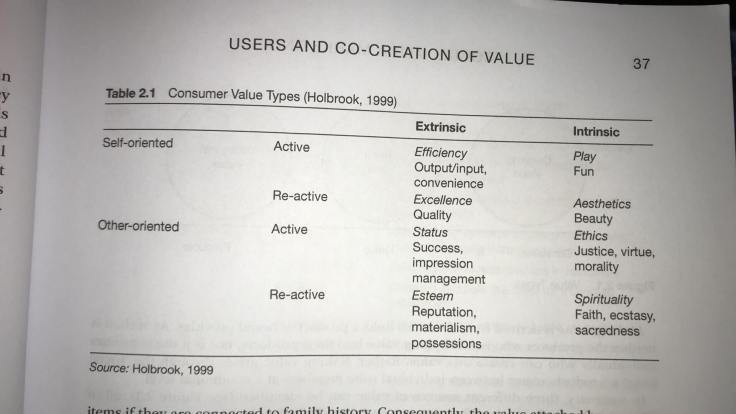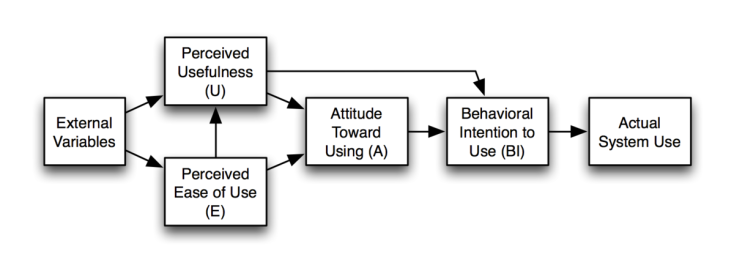It is vital for brands to acquire an understanding of social media marketing history as the growth of social media often results in platforms needing to evolve to meet their user base’s demands and so brands must learn to recognise what precipitates these changes and the trends they bring with them. Over the past two decades, many media platforms have failed to appreciate what their users desire, or, have just been slow to implement changes thus failing to adapt and seeing their user base leave them for a better service.
However, this inherent “newness” is not what makes specific platforms successful, but instead, it is as if the adaptations themselves are seen to be useful. Moreover, as for the platforms, they must gain recognition (whether deservedly or not) for their ease of use that would see the platform achieve adoption en-masse and therefore produces significance. As shown in this Technology Acceptance Model it is the perception of ease of use alongside the understanding of usefulness that directly influences peoples intention to use the platform. Social media became successful as it undoubtedly was far more straightforward to use versus traditional online media for its intended purposes.

Not only is this in regards to the development of the platforms but how they all offer vastly unique ways of operating that cater to different kinds of industry depending on the different audiences they are catering for, this means the brand must assess this before choosing what platforms they will operate through. For instance, Instagram is a very visual channel where the user base actively share their lives and so aspirational/lifestyle brands often do better with this platform since they can easily showcase products and their audience can swiftly browse and engage with branded products. Another example would be how the central demographic for Facebook has aged over since it went public, shifting from primarily college-aged teens/young adults to become somewhat middle-aged.
“73% of 30-49 year old’s are using the social network! If you wish to target this audience, it would be illogical to put money into advertisements on Instagram for example where the demographic is much younger.” (Jessica Milner, 2016).
As each social media platform has diverse user bases, it becomes crucial for brands to know how to use social media marketing for their business and brand needs appropriately and acknowledge which platforms are adapting as well as which platforms are considered to be out-of-date.
An example of how social media platforms adapt to user wants and needs would be video. Video has become a trend in recent times as most platforms have allowed the user to record and post short videos directly to their channels. When it comes to video, there is also the critical format of live video. This trend emerged on the back of the success of Periscope. Live video is widely supported on all major “live social media” such as Facebook, Twitter, and Instagram as it is seen as a personal, barrier-breaking tactic to bring users and brands “digital self” to life. Images on the whole still do achieve more engagement on social media, but videos are actively being encouraged, especially as video is more straightforward to monetise regarding the percentages of viewership meeting the minimum watch time to see an advert. This example shows the kind of considerations a brand must move through as they vie for relevancy and competitiveness.

As well as making use of social networks to market, brands can make use of analytic functions offered by most platforms and management suites to determine whether their audience is actually engaging and, with what precisely they are engaging.
The analytics function is incredibly essential when brands are using Paid Advertising on social media platforms; analytics allow brands to be able to see what their audience is mostly going to interact with in future campaigns and if each platform is performing at a good enough level concerning the chosen Key Performance Indicators (KPI). To help assess the relative success of a campaign and whether the campaign’s success was offering value for money, these KPIs show the overall level of interaction on posts to traffic being directed to landing pages. This depth of research will allow for a far more tailored approach in the future and leading targeted parts of campaigns to the relevant audience.
Brands can then make use of data from previous posts analytics to get the most out of Paid Advertising on social media. Using this data would allow a brand to refine campaigns to being about specific audiences seeing the relevant content. Choosing the correct social media marketing strategy in regards to demographics and what worked on previous posts will undoubtedly determine the success of future campaigns.
When considering what to make of the results derived from analytics, the mark of success lies in how much the content is “shared.” This idea comes from Holbrook and Hirschman (1982) who argued that consumption would change in nature from utilitarian towards symbolism and aesthetic in nature. So rather than consuming for rational means, consumers operate for spiritual and tribal fulfilment; especially when considering social media, it becomes more evident that the pursuit of social experiences is a goal when consuming as a narrative can be formed that tribe members can follow, share and interact.
Sharability is, therefore, a crucial part of the marketing theory for social media. Sharability is how value will be determined; if the consumer likes the brand, loves the product and likes the price then it has value, but there is also a more intrinsic value to be drawn. The concept of value has been expanded to include intrinsic and extrinsic interpretations. These extrinsic interpretations are far more explicit on social media as consumers share to impress others or to show their allegiance to a tribe or brand.
Brands can make use of this as they look to form marketing that alights this extrinsic value to ensure brand-related communication is welcoming, engaging and seeks to create value in the tribes as this will inspire tribe members to share and develop impressions. In line with the extrinsic values discussed, Schau and colleagues (2009) would note that these values are not related to the product but are how the brand should act within the community as the primary goal on social media is in fact to building relationships amongst the community and tribe members.
Social media platforms also offer a level of anthropomorphism for a brand as they allow a more direct and instant level of communication with their audience, by doing this the brand will become more personable; breaking down barriers and allowing a community to grow around the brand. Overall, social networks allow interaction with the target demographic which brands should exploit to create a far more significant non-geographically bound community that will thrive through the encouragement of social interactions when they recognise each other as admirers of the brand.
While naturally, this is a good thing to cultivate, it should be noted that campaigns focussing on a specific brand community carry dangers; whether it be based on- or offline. In his book Social Media Marketing, Dahl advocates for a focus on Tribalism in social media marketing as brand communities have a predetermined and explicit loyalty to the brand whereas Tribes are “broader, based on other aspects, but consumer products that have a symbolic meaning, for example through rituals or as a way to recognise other tribe members” (Dahl, 2015) this is further supported by his argument whereby tribe members can be split into brand communities online when you consider what brands they follow or forums they belong to.
As a consequence of this social media development in regards to consumer and brand relations is how brands are actively looking to forge relationships with their audiences due to demand from the audience or as a natural extension of the brands’ operations on social media. Consumer tribes fit into this behaviour as consumption has moved from utility to a more typical/experience based type of functionality.








